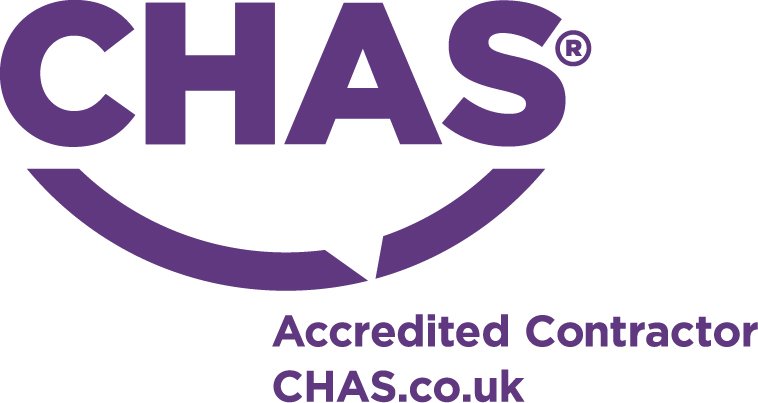Online Asbestos Awareness Course for Supervisors
Online Asbestos Awareness Course for Supervisors
Meta Title: Online Asbestos Awareness Course for Supervisors | Essential Training
Meta Description: Enroll in our online asbestos awareness course for supervisors to learn how to manage asbestos risks and ensure compliance in the workplace. Accredited and flexible learning.
As a supervisor, you're responsible for ensuring the safety of your team, especially when it comes to the risks associated with asbestos. Our online asbestos awareness course for supervisors is designed to equip you with the necessary knowledge to manage asbestos safety in compliance with UK regulations. This course will provide you with the skills to supervise workers effectively while ensuring that asbestos risks are mitigated and the workplace remains safe.
Why is Asbestos Awareness Important for Supervisors?
Supervisors play a crucial role in overseeing work activities, especially when asbestos risks are involved. They are responsible for ensuring that workers are trained, risks are managed, and safety protocols are followed. Without the right knowledge and skills, supervisors can unintentionally expose workers to harmful asbestos fibres, which can lead to serious health conditions like mesothelioma and asbestosis. This course helps you understand your responsibilities, ensuring that you can lead your team confidently and in line with health and safety regulations.
Key Topics Covered in the Course
- Overview of asbestos risks and its impact on health
- Recognising asbestos-containing materials (ACMs) in the workplace
- Supervising workers to ensure safe handling of ACMs
- How to implement and enforce safety procedures
- UK legal requirements for asbestos safety in the workplace
- Procedures for managing asbestos incidents
- How to conduct risk assessments and ensure compliance with health and safety laws
Who Should Take This Course?
This course is ideal for supervisors who oversee employees in environments where asbestos is present or might be disturbed, such as:
- Construction site supervisors
- Site managers
- Maintenance supervisors
- Health and safety officers
- Facilities managers
Course Format and Certification
Our online asbestos awareness course for supervisors is flexible and can be taken at your convenience. The course is designed to be completed online, allowing you to study at your own pace, whether you're at the office or on-site. Upon successful completion, you’ll receive a certificate that is fully accredited and recognised by UK health and safety authorities, confirming your competency to supervise asbestos safety in the workplace.
FAQs About Online Asbestos Awareness Course for Supervisors
What makes this course different from a standard asbestos awareness course?
This course is tailored specifically for supervisors, with a focus on managing asbestos safety and ensuring compliance with regulations, while the standard course is designed for general awareness.
How long does the course take to complete?
The course typically takes around 3-4 hours to complete, but you can take breaks and return to the material as needed.
Is this course suitable for supervisors in all industries?
Yes, while it's particularly useful in construction and maintenance, the course is suitable for any supervisor who works in environments where asbestos could be present.
Do I need any prior knowledge of asbestos?
While it’s helpful, you do not need prior knowledge of asbestos. This course covers all the necessary information from a supervisor's perspective.
Will this course teach me how to remove asbestos?
No, this course is focused on awareness and management of asbestos risks. For actual asbestos removal, additional specialised training is required.
Enrol Now and Ensure Compliance
Don't leave the safety of your team to chance. Enrol in our online asbestos awareness course for supervisors today and ensure that your workplace is compliant with the latest health and safety regulations. With the knowledge gained from this course, you can effectively manage asbestos risks, safeguard your workers, and meet your legal obligations.
Tags:
online asbestos awareness training for supervisors; asbestos safety supervisor training; asbestos awareness for site managers; asbestos regulations training for supervisors; certified asbestos supervisor course; asbestos management for supervisors; asbestos awareness online training UK; asbestos compliance for supervisors; health and safety supervisor training
You said:
write the next one: * Certified asbestos awareness course in the UK
ChatGPT said:
ChatGPT
html
Copy code
Certified Asbestos Awareness Course in the UK
Meta Title: Certified Asbestos Awareness Course in the UK | Trusted Training
Meta Description: Enrol in our certified asbestos awareness course in the UK. Fully accredited training to ensure compliance and safety in managing asbestos risks. Available online and onsite.
When it comes to asbestos awareness, ensuring your training is certified is not just a matter of compliance—it's a matter of safety. Our certified asbestos awareness course in the UK provides comprehensive training for workers and employers, equipping you with the skills and knowledge needed to manage asbestos risks responsibly. This course is recognised and accredited by leading authorities, ensuring you meet UK health and safety standards.
Why Choose a Certified Asbestos Awareness Course?
A certified asbestos awareness course guarantees that the training you receive meets stringent UK regulations and industry standards. Certification not only demonstrates your commitment to safety but also ensures that you and your team are prepared to handle asbestos-related challenges with confidence. Our course is designed to offer practical knowledge and clear guidance, making it suitable for a wide range of industries.
Benefits of Certification
- Ensures compliance with the Control of Asbestos Regulations 2012
- Builds confidence in managing asbestos risks
- Provides recognised proof of competency
- Reduces liability for employers
- Enhances workplace safety and protection
What Does the Course Cover?
Our certified asbestos awareness course in the UK provides comprehensive training across all key aspects of asbestos safety. Topics include:
- The health risks associated with asbestos exposure
- Understanding asbestos-containing materials (ACMs)
- How to identify and manage asbestos risks
- Legal requirements and responsibilities
- Emergency procedures for asbestos incidents
Who Should Take This Course?
This course is ideal for individuals in the following roles:
- Construction workers
- Site supervisors and managers
- Maintenance and facilities staff
- Electricians, plumbers, and decorators
- Property managers and landlords
- Anyone working in environments where asbestos may be present
Flexible Training Options
Our certified asbestos awareness course is available both online and onsite, ensuring maximum flexibility for participants. Whether you prefer to learn at your own pace from the comfort of your home or need onsite training tailored to your team, we have you covered.
FAQs About Certified Asbestos Awareness Courses
What does it mean for the course to be certified?
A certified course is officially recognised by industry bodies, ensuring that the training meets established standards for asbestos awareness and safety.
Is this course legally required?
Under the Control of Asbestos Regulations 2012, employers must ensure that workers likely to encounter asbestos receive appropriate training. This certified course satisfies those requirements.
How long does it take to complete the course?
The course can typically be completed in 2-4 hours, depending on your pace. Online participants can pause and resume as needed.
Will I receive a certificate upon completion?
Yes, all participants will receive a recognised certificate upon successful completion of the course, demonstrating their competency in asbestos awareness.
Is this course suitable for beginners?
Absolutely. The course is designed to provide foundational knowledge, making it ideal for both beginners and those seeking a refresher.
Get Certified Today
Don’t leave asbestos safety to chance. Enrol in our certified asbestos awareness course in the UK today and ensure you’re fully prepared to manage asbestos risks. With flexible training options and accreditation from industry-leading bodies, our course is the perfect choice for individuals and teams alike.
Visit our website to learn more and register for the course. Protect yourself, your team, and your workplace with trusted asbestos awareness training.





